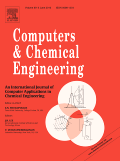 Authors: William M. BARRETT Jr¹, Jasper van BATEN² and Todd MARTIN¹
Authors: William M. BARRETT Jr¹, Jasper van BATEN² and Todd MARTIN¹
Affiliations: ¹US Environmental Protection Agency, National Risk Management Research Laboratory, 26W. Martin Luther King Drive, Cincinnati, OH, USA and ²AmsterCHEM, Calle Las Rozas 32, 04618 Las Rozas/Cuevas del Almanzora, Almería, Spain
Reference: Computers and Chemical Engineering, 35 (2011), pp. 2680– 2686
Abstract
Environmental metric software can be used to evaluate the sustainability of a chemical based upon data from the chemical process used to manufacture it. An obstacle to the development of environmental metric software for use in chemical process modeling software has been the inability to obtain information about the process directly from the model. There have been past attempts to develop environmental metrics that make use of the process models, but there has not been an integrated, standardized approach to obtaining the process information required for calculating metrics. As a result, environmental evaluation packages are largely limited to use in a single simulation package, further limiting the development and adoption of these tools.
This paper proposes a standardized mechanism for obtaining process information directly from a process model using a strongly integrated interface set, called flowsheet monitoring. The flowsheet monitoring interface provides read-only access to the unit operation and streams within the process model, and can be used to obtain the material flow data from the process streams. This material flow data can then be used to calculate process-based environmental metrics. The flowsheet monitoring interface has been proposed as an extension of the CAPE-OPEN chemical process simulation interface set.
To demonstrate the capability of the flowsheet monitoring interfaces, the US Environmental Protection Agency (USEPA) WAste Reduction (WAR) algorithm is demonstrated in AmsterCHEM’s COFE (CAPE-OPEN Flowsheeting Environment). The WAR add-in accesses the material flows and unit operations directly from the process simulator and uses flow data to calculate the potential environmental impact (PEI) score for the process. The WAR algorithm add-in is included in the latest release of COCO Simulation Environment, available from http://www.cocosimulator.org/.
